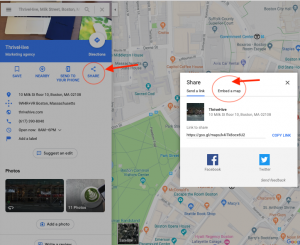Contributor Kevin Lee takes a close look at affiliate marketing and how it fits into the programmatic advertising space.

Within certain marketing circles, the term “performance marketing” is equated with affiliate marketing and therefore associated with lots of unnecessary baggage (much of it unwarranted). However, when considered as a digital marketing layer, the term “performance programmatic” becomes more useful and more instructive in terms of describing where it fits into the performance marketing ecosystem as well as the overall marketing ecosystem.
It takes resourceful CMOs and senior marketers, ones comfortable with math (an area often under-emphasized by universities training marketers on the “creative” side) to move budgets where they work hardest, both short term and long term.
In addition to media buying considerations, CMOs need to make sure messaging and positioning are resonating with their target audience(s). So, it’s not just the media plan and the earned media marketing plan that influence success (or failure), but also the positioning and the creative messaging.
Since digital marketing silos (client-side, ad-platform-side and externally) aren’t going away anytime soon, affiliate marketing has been extremely resilient — even if the affiliate publisher sometimes gets credit it doesn’t deserve.
I recently had a conversation with a veteran in digital marketing (and a friend) regarding the future prospects of affiliate marketing platforms and publishers. Here’s a synopsis of a recent conversation with him. Though I know it’s the opposite of how most Q&As are organized, I’m the one answering.
1. Is affiliate marketing actually incremental to traditional marketing or is it cannibalistic?
In my experience, the answer is “marginally incremental,” when measured within the online-only ecosystem (affiliates, of course, get no credit for offline conversions and mobile conversions can be tricky too). As a general matter, affiliate platforms are measured in their own silos, so, using a cookie example, display, search and affiliate often all claim credit for the conversion.
While each may have been very or somewhat influential, attribution is difficult and often executed poorly. Lousy attribution models are generally not predictive of optimal budget shifts in an auction media marketplace where media price-to-volume ratios of elasticity are very different (for example, search is inelastic; display more so).
The trick is to understand what incremental value affiliate marketing is adding at the channel and publisher level (in the case of larger publishers). This sometimes requires entirely shutting off affiliate channels to properly test marginal value because — in addition to the value captured by the click and conversion — affiliate impressions deliver value too, and those are rarely factored into attribution models.
Sometimes when a merchant changes affiliate networks they use this break to do a test.
2. Have you found that customers gained through affiliate programs are of quality lifetime value (LTV)?
Generally, I find they have a lower LTV, because if a marketer or agency is controlling the media buy (SEM, Social, Display, etc.) one has the ability to hone one’s messaging to target one’s highest LTV audiences. In that situation, you can employ all of the targeting variables at your disposal, including geography, dayparts, OS and whatever demographic or behavioral data you can use, whereas you lack that control with affiliates.
3. Do your clients actually view affiliate as a growing category?
Performance marketing is a growing category if one counts the desire of marketers for greater accountability in every media and marketing dollar spent. And because affiliate marketing is certainly one flavor of performance marketing, the answer is a clear “yes.”
4. Would you invest your money in the affiliate category if you were an investor?
Performance marketing’s holy grail — and perhaps that of marketing as a whole — is a central dashboard that does the following:
- Merges non-PII data with transactional data across every paid touch point.
- Overlays offline media and earned media.
- Lets one create either A/B or fractional factorial experimental designs.
The opportunity lies in helping marketers gain confidence that they are allocating all budgets in such a way that both short-and long-term sales (and profit) are maximized. The required math strongly favors the enterprise-sized marketer. So, from a third-party perspective, there is an opportunity there, but it’s very hard to get all the data in one place (even with APIs).
Additionally, there are some headwinds to what would normally be categorized as affiliate marketing, including:
- Mobile not being as trackable as desktop sales, though it’s getting better due to apps tying location to retail purchases.
- Offline tracking still lacking. It seems to me that the players most likely to fully crack payment-based verification of a sale are the online wallet companies because their mobile apps know what the paired charge card activity is and the location you were at for every charge (even if you paid without the phone app).
- Once you are able to determine the incremental value, the affiliate commissions will probably need to be adjusted down, or terms put in place that allow the suppression of the affiliate tracking pixel or device ID conversion call if the commerce site detects a proximal paid media click. For example, if a click comes in with a search UTM, the affiliate tracker is disabled.
- Unfortunately, if you set stricter terms and/or drop the commission and not your competition, there is a risk of publisher/affiliate flight to the competition.
Until the recent policy changes within Facebook on compensated influencer marketing, one could count as “performance marketing” thousands of social media influencers who took payment for promotion, from Hollywood names down to micro-influencers.
On the tailwind side in terms of growing the “performance pie,” the “native” embedded affiliate links used by product-centric publishers deliver additional revenue, so that side of the market is definitely growing.
How does the above relate to performance-based programmatic display? For the most part, it’s important to understand that you are missing far more data than you actually have.
Impressions happening within walled gardens (Google and Facebook), impressions within affiliate networks, and impressions within performance-based ad networks (Criteo) generally aren’t in your programmatic reporting, and even having the clicks show up in a central dashboard will be a major undertaking. So, in the meantime, use A/B Testing and experiments to understand what’s working within programmatic and other channels as well.
Opinions expressed in this article are those of the guest author and not necessarily Marketing Land. Staff authors are listed here.
Marketing Land – Internet Marketing News, Strategies & Tips
(58)










